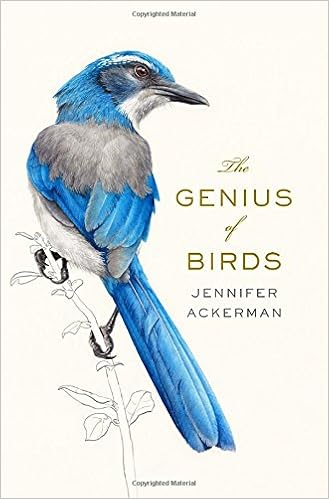 Shortly after discovering the Great Backyard Bird Count last year, I started to realize what a perfect hobby birding could be for me. There is something in the process that appeals to me–both as a biologist and as a lover of lists. Unfortunately, I have not had as much time to develop my skills as a birder as I would like. Instead, I take a multi-tasking approach to the hobby as I look for birds on my runs or bike rides or from the comfort of my front porch. My newfound interest also inspired me to expand my reading list from the typical molecular and cell biology.
Shortly after discovering the Great Backyard Bird Count last year, I started to realize what a perfect hobby birding could be for me. There is something in the process that appeals to me–both as a biologist and as a lover of lists. Unfortunately, I have not had as much time to develop my skills as a birder as I would like. Instead, I take a multi-tasking approach to the hobby as I look for birds on my runs or bike rides or from the comfort of my front porch. My newfound interest also inspired me to expand my reading list from the typical molecular and cell biology.
Enter The Genius of Birds by Jennifer Ackerman. The book explores the wonders of bird behaviors and cognition (a more scientific and less nebulous term for intelligence) and explores the latest research to understand how birds accomplish their unique feats of memory and critical thinking. Just as Lab Girl gave me a new appreciation for trees, The Genius of Birds gave me a new perspective on the birds around us.
 Ackerman convinced me that "bird brained" is truly a misnomer. While birds do have small brains, they are densely packed with neurons and neural connections. Some birds are smarter than others. Corvids, the family that include crows, ravens, and parrots, are on the Einstein end of the spectrum, while quails, ostriches, and turkeys are on the Cletus the Slack-jawed yokel end. (Ackerman is always quite generous when writing of the simpler birds and would never be so pejorative with her subjects. She suggests that we just haven't observed the brilliance of these birds yet.) Crows have been considered smart since the time of Aesop, whose fable The Crow and the Pitcher highlights the type of problem solving that scientists enjoy exploring with these animals. The internet is filled with the fun stories about corvids and their feats of genius, like collecting gifts for people who feed them and even using tools. This genus has developed a reputation for clever and innovative behavior. Neuroscientists even use corvids as a model organism to better understand human cognition.
Ackerman convinced me that "bird brained" is truly a misnomer. While birds do have small brains, they are densely packed with neurons and neural connections. Some birds are smarter than others. Corvids, the family that include crows, ravens, and parrots, are on the Einstein end of the spectrum, while quails, ostriches, and turkeys are on the Cletus the Slack-jawed yokel end. (Ackerman is always quite generous when writing of the simpler birds and would never be so pejorative with her subjects. She suggests that we just haven't observed the brilliance of these birds yet.) Crows have been considered smart since the time of Aesop, whose fable The Crow and the Pitcher highlights the type of problem solving that scientists enjoy exploring with these animals. The internet is filled with the fun stories about corvids and their feats of genius, like collecting gifts for people who feed them and even using tools. This genus has developed a reputation for clever and innovative behavior. Neuroscientists even use corvids as a model organism to better understand human cognition.Even the common sparrow is a star in terms of its ability to adapt to humans and use our presence to further its species. The house sparrow is present on every continent except Antarctica, and is thought to have expanded its ecological range in parallel with humans. Surprisingly, the sparrow has gotten to be the bird with the largest range not simply due to its introduction in different habitats. It is the adaptability and flexibility of this bird that has made it so successful. Sparrows are inventive in how they forage for food (they are willing to explore food sources before other birds) and even in how they build their nests (in cities sparrow nests can be found with cigarette butts, which help repel parasites). I admit that this chapter gave me a bit more respect for the bird that always seem to monopolize the seed in my bird feeders. Now I can appreciate why!
 |
| Pigeon brain via Wikimedia Commons |
Birds that excel at navigation have a larger hippocampus, the region of the brain that stores maps and memories; what's more this brain region can get bigger just by using it more. This correlation was also observed in a study of London cab drivers, where drivers with a longer work history have a correspondingly bigger hippocampus.
As you can tell, the book is filled with tons of interesting examples of bird behavior and neuroscience. One high point was the fascinating history of the homing pigeon, which has been used by Julius Caesar, Allied troops in North Africa, and modern day Cuban military officials. (I can't believe this hasn't been its own book.) In short, I recommend The Genius of Birds, especially if you you have an interest in birds, animal behavior, or the brain.
No comments:
Post a Comment
Note: Only a member of this blog may post a comment.